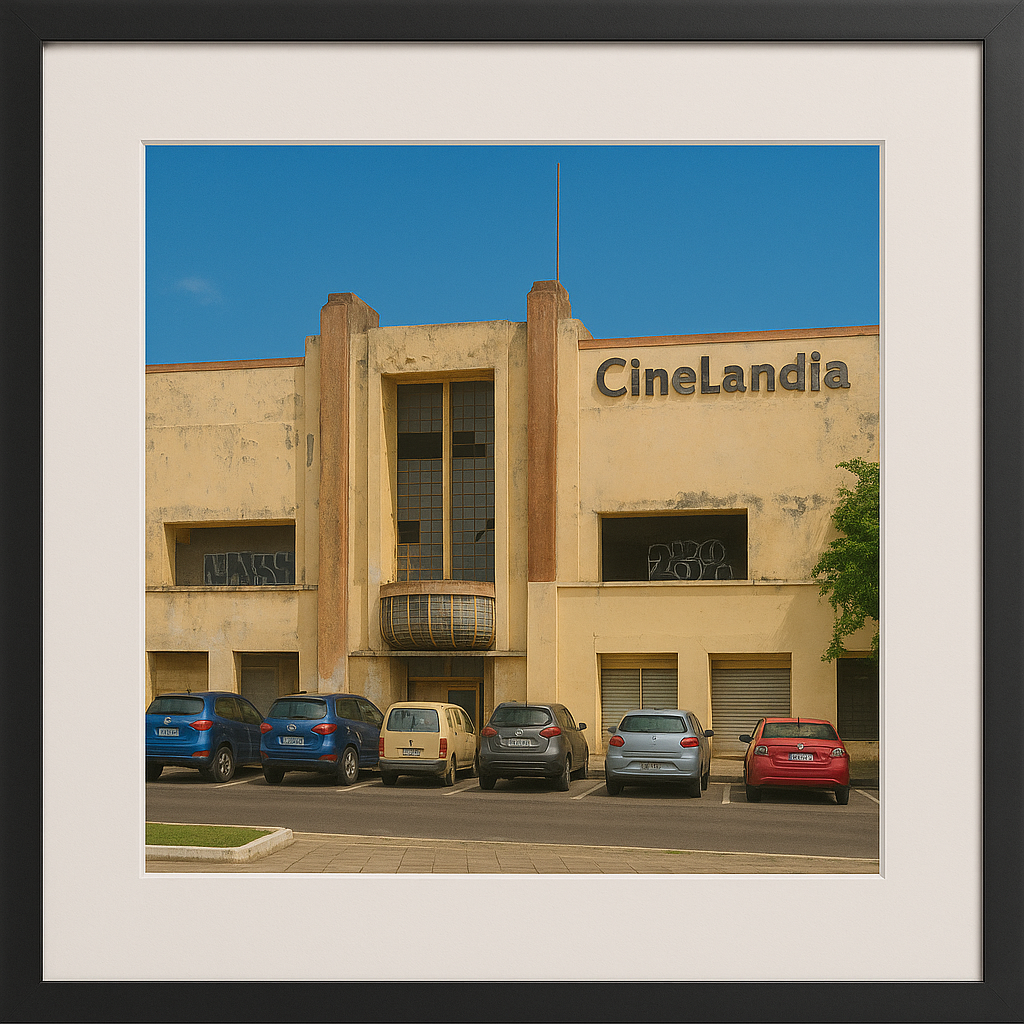
The Cinelandia Cathedral (1916)
Alfredo Hernandez
From the time Alfredo Pellicer Hernandez arrived in Curacao from Venezuela, he dreamt of opening the first movie theatre in Curaçao. He slowly saved money from outdoor film showings and in 1916, he opened the Salón Habana Movie Theatre.
When the theatre was destroyed by fire in 1932, Alfredo rebuilt it as the Cinelandia. This second theatre opened with 900 seats. It was soon expanded to accommodate 2,200 seats. On a starry night it was particularly magical with many of the seats open to the sky (and often the rain.)
The Cinelandia Cathedral (1916)
The night the movie theatre burned to the ground it was particularly hot. Hurricanes raged far to the north, but in Punda the wind was still. You could smell the scent of brine and fish fry floating in the air.
The Salón Habana movie theatre was in the center of the town. And as usual, Alfredo Hernandez was upstairs in the projection booth with his face pressing against a small window. Through it, he counted the movie goers. The theatre was full. It was a good night.
That evening, after Alfredo locked the iron gate and went home he heard fire sirens. By the morning, there was nothing left of the theatre.
Alfredo Hernandez was not known to be a man that waited on problems. That same day he drove to the Amigoe di Curaçao newspaper and placed a full page advertisement:
“A competition to rebuild our theatre. All designs welcome. Daring preferred.”
Within a week, entries began pouring in.
A school in Miami proposed a swimming pool in the place of chairs. While a man from Moscow sent a drawing of a white tube that looked suspiciously like a giant rocket. A retired circus engineer in Lima suggested the use of a large trapeze net that audiences could lie on while watching films projected onto a domed ceiling. One ambitious child from Aruba mailed in a cardboard model of a theatre shaped like a giant popcorn box, complete with soda fountain dispensers enabled chairs.
Alfredo laid each proposal out carefully across his dining table. He admired their boldness, their madness, their beauty. But none, he thought, had quite captured the magic he was looking for.
One morning there was a knock at the Hernandez door. On the street stood a tall Dutchman sporting a handlebar moustache, linen suit, and holding a large wooden box.
"My name is Pieter A. van Stuivenberg" said the man wiping his brow. “I am an architect.”
"Well come in", said Alfredo.
Pieter stumbled into the main room and put down the box. He proudly waited.
"What is it?" asked Alfredo.
Pieter ran to the box and opened the top. He lifted out a model of a building, its art deco geometric shapes shot up from the floor. Columns curled like seashells. Inside were rows of red velvet seats—2,200 of them. Half the theatre had a ceiling painted like the Curaçao sky at midnight, complete with twinkling stars and half the theatre had no roof at all.
"And the screen sir, it will be the largest in the Caribbean", he promised.
Alfredo touched the model like it was holy. “This,” he whispered, “is not a cinema. This is a cathedral”
And so it was built.
In 1941, Cinelandia Bioscoop opened its grand doors in the heart of Willemstad. The island had never seen anything like it. People arrived in pressed linen and patent leather shoes, clutching tamarind sweets and bags of coconut sugar. Children gasped at dancing cartoons. Teenagers held hands in the shadows. Grandmothers wept at melodramas with Spanish subtitles.
Some liked to sit under the balcony but for many the best seats were the ones where they could look up and see the sky (and on some nights feel the rain.)
Years passed.
Television appeared in every home. Soon every pocket had a Smartphone. The crowds thinned. Weeds curled around the box office. Birds nested in missing glass brick windows. Graffiti appeared in the balconies.
And then came the sign: "Scheduled for Demolition."
But theatre lovers are a stubborn breed. The Hernandez family rallied. And in 2003, the theatre was granted sanctuary as a protected monument.
Now instead of the movie pictures, the building has become the show. If you are out walking in Punda, do not pass by Cinelandia without stopping. Look at the strange crumbling walls with boarded windows and imagine for a moment a Saturday night with Alfredo Hernandez upstairs in the projection booth counting a full house of 2,200 movie goers.
Ritz Ice Cream
The Ice Cream that Won the War



